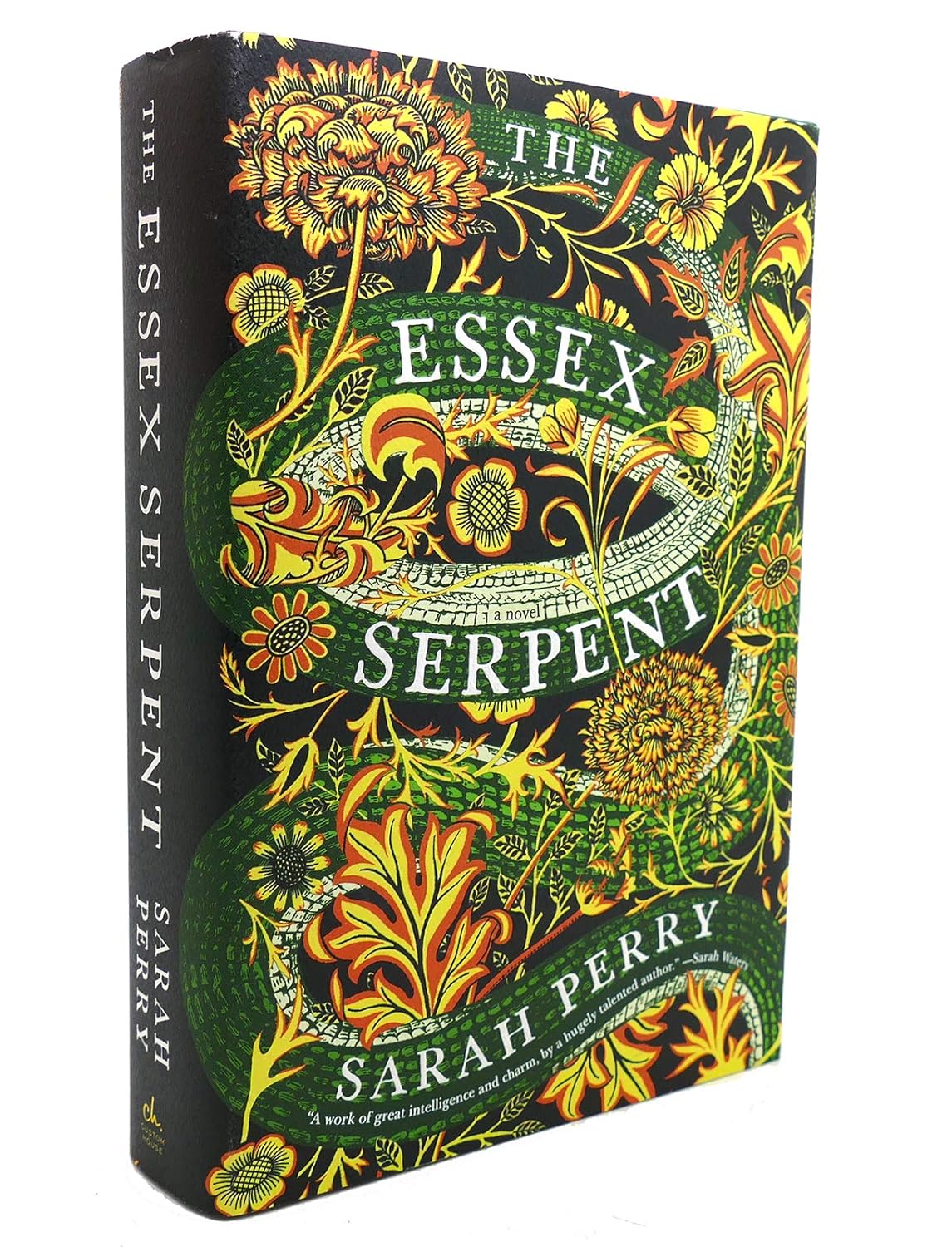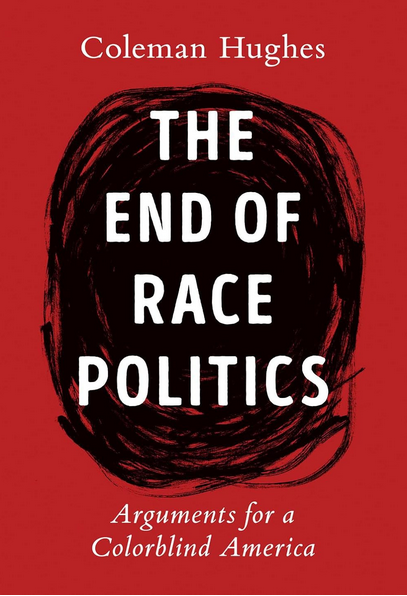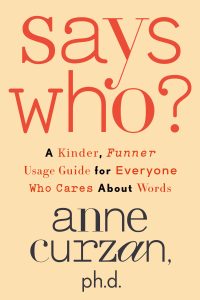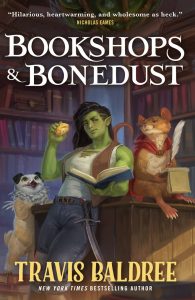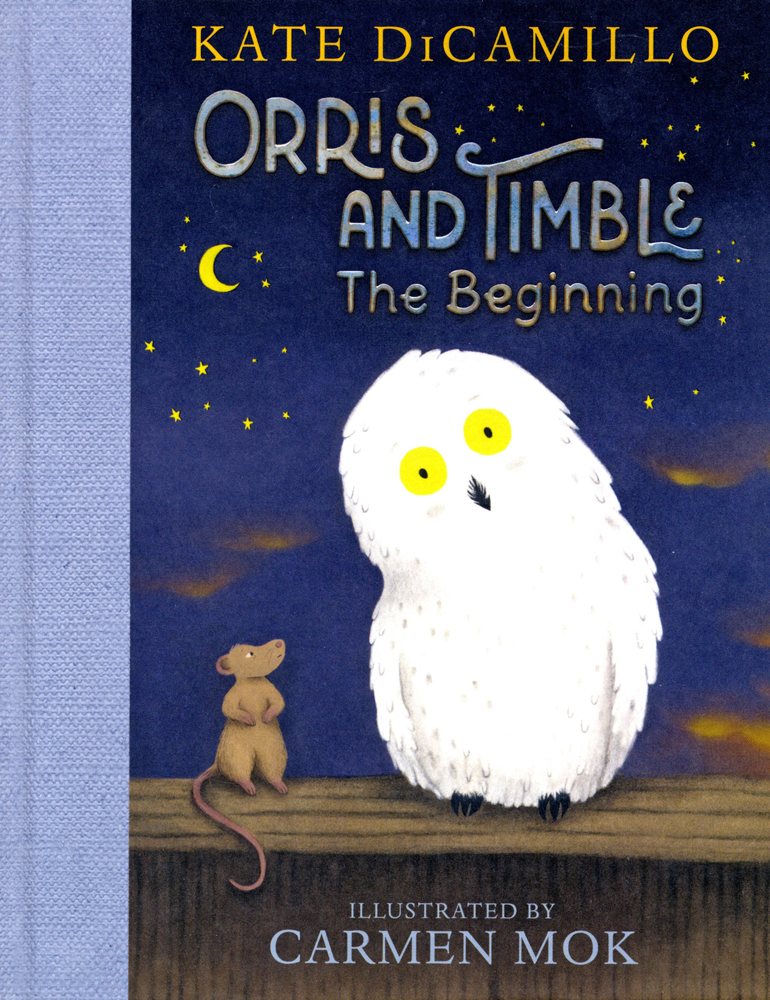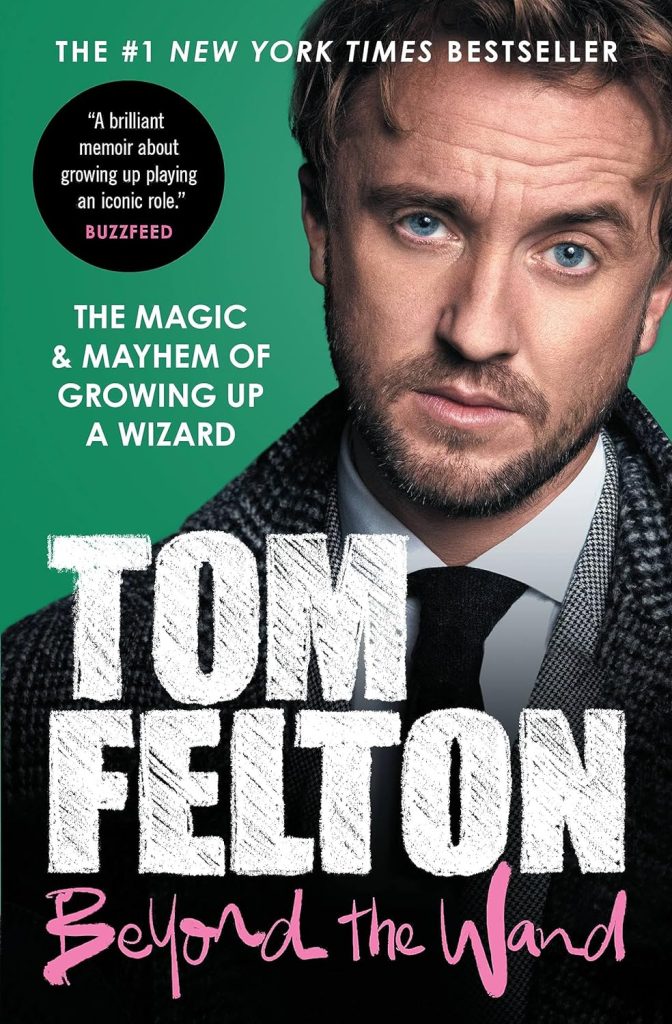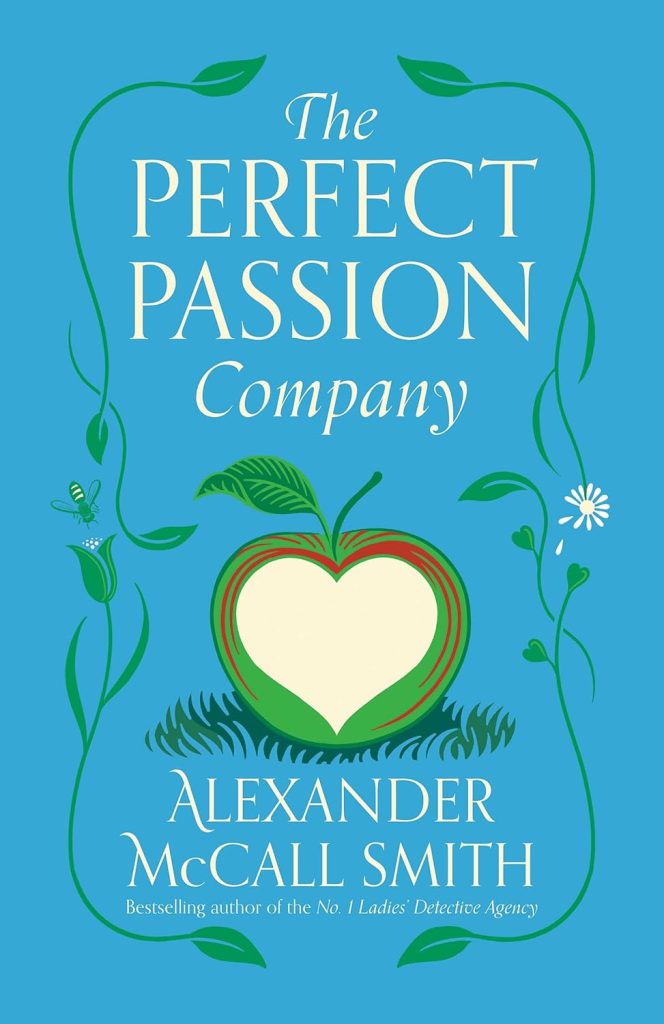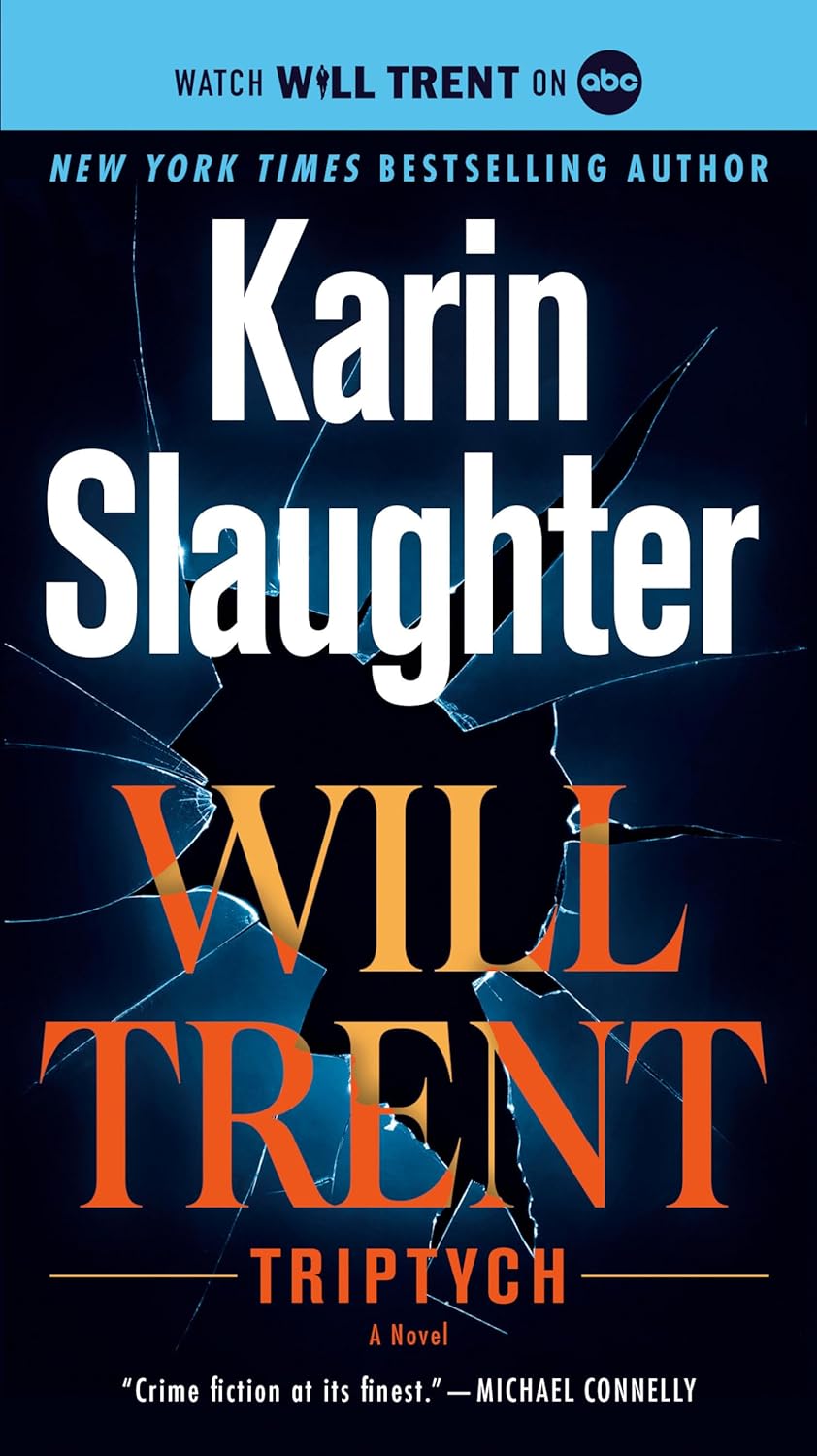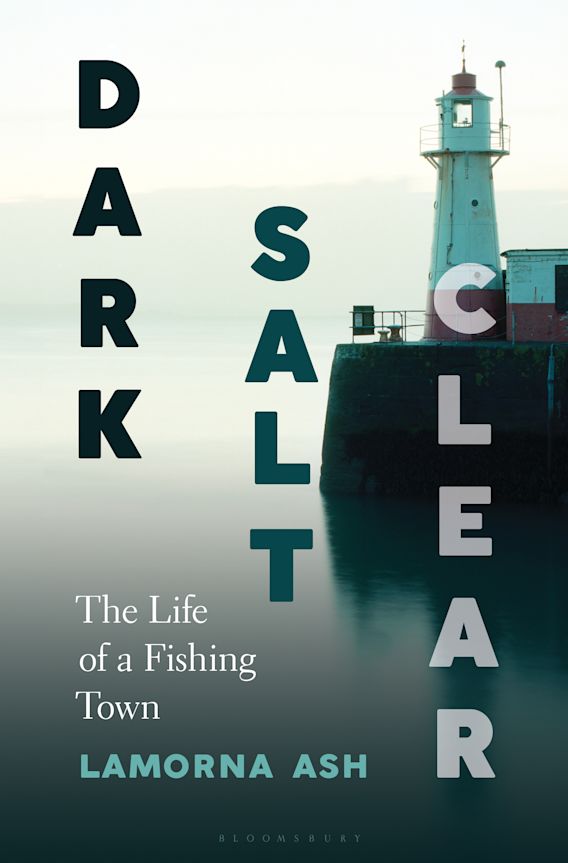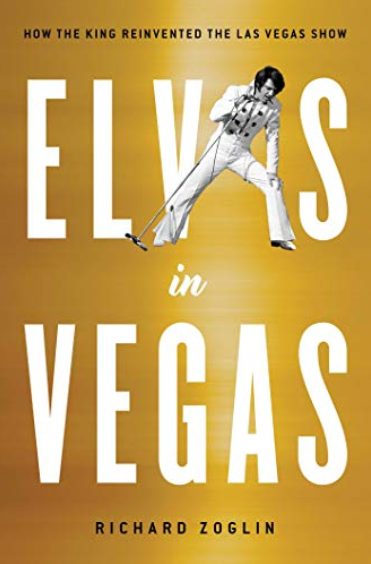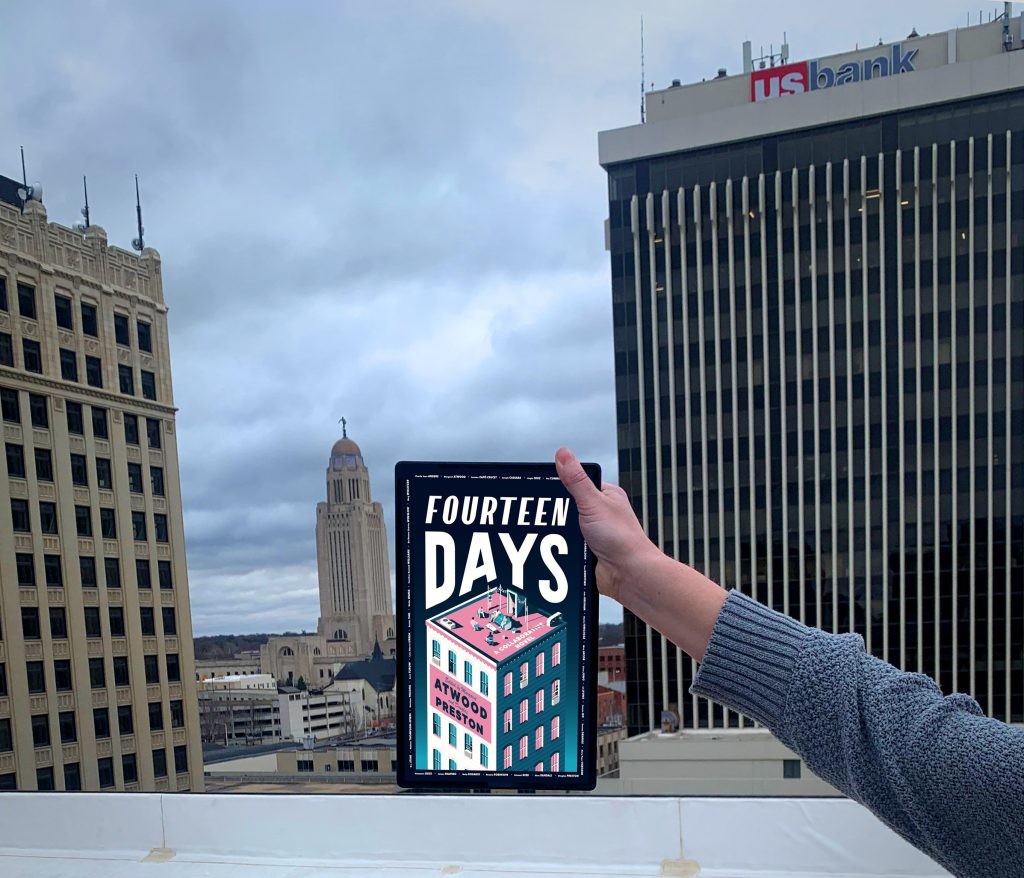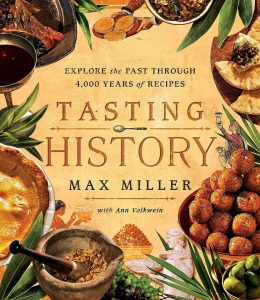Search the Blog
Categories
- Books & Reading
- Broadband Buzz
- Census
- Education & Training
- General
- Grants
- Information Resources
- Library Management
- Nebraska Center for the Book
- Nebraska Memories
- Now hiring @ your library
- Preservation
- Pretty Sweet Tech
- Programming
- Public Library Boards of Trustees
- Public Relations
- Talking Book & Braille Service (TBBS)
- Technology
- Uncategorized
- What's Up Doc / Govdocs
- Youth Services
Archives
Subscribe
Search Results for: "friday reads"
Friday Reads: “The Essex Serpent” by Sarah Perry
Set in Victorian England, this historical fiction novel perfectly embraces the setting and mystery of its time-period. Filled with unique and interesting characters from beginning to end, Sarah Perry has written a beautiful, intelligent, and charming novel.
Newly widowed, Cora Seaborne is finding her stride again after the death of her domineering husband. Determined to escape the stuffy rules of London society, she takes her son and maid to the English countryside to pursue her studies as a budding naturalist. While tramping the marshes and collecting specimens she becomes fascinated with the local lore of the Essex Serpent, and the possibilities that a Paleolithic species could be resurfacing and prime for discovery. Pushed together with the local reverend in her pursuit of science and discovery, circumstances will lead to a magnetic and clandestine attraction that could ruin them both.
Reverend William Ransom is an unlikely clergyman, young and easy-going, he’s more likely to be assumed a farmer than a reverend. Living in the countryside of Essex with his wife and children, tending to his flock with a more practical and intelligent approach to life, he’s often dismayed and annoyed by his congregation’s flights of fancy and superstitions, especially when a local man drowns and it’s blamed on the mysterious Essex Serpent.
Dr. Luke Garrett is single-minded in his pursuit of knowledge and advancing medicine, especially surgery of the heart. Taciturn and churlish, he’s found himself unexpectedly mesmerized by Cora since tending her dying husband. Striking up an unlikely friendship with her and visiting the countryside as often as his practice allows just to see her. He’s dismayed as her letters at first just mentioned formally, The Reverend Ransom, but now are filled with the familiar, Will.
Perry strings the lives and experiences of these dissimilar characters together with letters and first-person storytelling to create an almost magical whole.
Perry, Sarah. The Essex Serpent. Mariner Books. 2017.
Friday Reads: The Midcentury Kitchen by Sarah Archer

If you have a midcentury house like me, you may wonder what your kitchen originally looked like. Mine likely underwent several unfortunate remodels before my time, but it still seems to have its original footprint. I’ve often pondered what I would do if I renovated. Would I scrap the midcentury footprint or embrace it? I stumbled upon the Mid Mod Midwest podcast and Instagram account where architect Della Hansmann tackles various topics related to midcentury remodeling. She recommended Sarah Archer’s book on midcentury kitchens for inspiration and historical context, so I decided to pick up a copy. If you are interested in midcentury design history or advertising history, you might like Sarah Archer’s The Midcentury Kitchen: America’s Favorite Room, from Workspace to Dreamscape.
The first thing I noticed was the bounty of colorful advertisements and photographs showing over-the-top kitchens, including space-age dream kitchens and television sets. This book isn’t about builder basic reality, but it is still a great reference for the midcentury color palettes and the trophy kitchens. Additionally, Archer takes the reader through the history of American kitchen design trends from prewar examples through the 1970s. She also looks at the history and evolution of advertising, and analyzes the messaging corporations were bombarding American consumers with to try to get them to buy more and more.

Archer takes a brief look at processed food marketing and the sweet spot companies landed on to help sell more product: make it appear easy, but not too easy. A psychologist who supposedly consulted with the Betty Crocker company, theorized that adding fresh eggs to a box cake mix would strike the right balance between convenience and still feeling like baking. Packaged icing was another sweet spot, marketing to both convenience and creativity. Similar marketing strategies were used with gelatin and canned soups. Archer also theorizes that perhaps we can draw a similar parallel to the marketing and appeal of contemporary meal kit companies today.
Fun Fact: The industry standard 36″ high countertop is based on the height that worked for industrial engineer Lilian Gilbreth. Unless you are 5’7″, it probably doesn’t work well for you.
Archer also examines gender stereotypes in midcentury kitchen adverting, and shows examples of how shifting attitudes in the 1960s were sometimes reflected in ad campaigns. They usually missed the mark, and reinforced what they saw as traditional gender roles for women. Companies tried to capitalize on other cultural shifts, incorporating “counterculture” aesthetic into design. Trendy 1960s kitchens could have psychedelic wallpaper, and pastel pallets gave way to wood and warm tones like harvest gold and avocado green.
The Midcentury Kitchen offers a lot to digest, whether you are looking for design inspiration or interested in learning more about advertising history. It may also help readers think more about the advertising we are bombarded with today.
After reading the book, I also discovered that Della Hansmann interviewed Sarah Archer in 2021 on her Mid Mod Remodel podcast. If you are interested in listening to their conversation about midcentury kitchens, they cover some of the high level history from the book as well as preservation and renovations thoughts on living in our midcentury kitchen footprints today.

Archer, Sarah. The Midcentury Kitchen: America’s Favorite Room, from Workspace to Dreamscape, 1940s-1970s. The Countrymen Press, 2019.
Friday Reads: The End of Race Politics: Arguments for a Colorblind America
Reading this book conjures up thoughts about collection development. Yep, that’s right, for the handful of you that are reading this, I want to talk about collection development, on the record. Not necessarily because you might have limited knowledge of this practice (you may or may not—let’s avoid assumptions), but rather my concern is that some libraries may have forgotten the importance of having balanced library collections, or perhaps have never really believed in the practice in the first place. Coleman Hughes, for instance, presents an alternate view of race politics, taking aim at contemporary works by Ibram Kendi and Robin DiAngelo, among others espousing similar views. He doesn’t pull any punches in his criticism, starting with labeling them as “Neoracists” (to be fair, a term used by many others, including, notably, John McWhorter). We live in times where some (librarian or not) might dismiss outright the assertions of Hughes, limiting his book in library collections (or requesting it’s immediate removal) while categorizing what he has to say as blasphemy, disinformation, or applying any other ridiculous criticism. To me, it doesn’t matter if one agrees or disagrees with what Hughes (or Kendi, DiAngelo, et. al.) has to say; it’s a question of providing the public with an up to date collection of opposing viewpoints on relevant subject matters. For example: Does your library collection contain books by Kendi and Ta-Nehisi Coates, but no antithesis from someone such as Coleman Hughes, Thomas Sowell, Glenn Loury, or John McWhorter? I imagine some might provide a feeble defense to these unbalanced collection development decisions by arguing that they are (as morally superior individuals looking out for you, the uninformed, ignorant reader who is incapable of your own thought) preventing dangerous “misinformation” from being spread and consumed by you. Hey, they are looking out for your interests, or protecting you, and for that reason, you should get off their case. Maybe even thank them. But is that your role as librarian? To be the arbiter of The Truth, one way or another? Ultimate decider of what is accurate or inaccurate? Or is it to offer a robust set of resources, presenting point and counter point, to individuals and the community at large so that they can make their own decisions? I’d argue the latter. Over the past few years, we’ve heard various hyper-ventilations about protecting the public from dangerous misinformation, formation of government ministries of truth, and the antidote to this the library’s promotion of censorship (e.g. casual exclusion of certain viewpoints, de-selection of materials, or non-selection in the first place) to achieve that end. Of course, come to find out, those marginalized as dangerous misinformation spreaders turned out later on to have a track record that is equal to or greater than Larry Holmes (69-6, 44 by KO). Sometimes, this nonsensical censorship is sold under the guise of “information literacy”. The perplexing part is that many seem perfectly OK with this. In response, the Supreme Court opinion in U.S. v. Alvarez comes to mind:
“Our constitutional tradition stands against the idea that we need Oceania’s Ministry of Truth . . . And suppression of speech by the government can make exposure of falsity more difficult, not less so. Society has the right and civic duty to engage in open, dynamic, rational discourse.”
Which brings me to my second rant about balanced collections and that, my friend, is book displays. Don’t get me wrong, I’m all for book displays in general, and the promotion of books and other items in the collection, strategically placed towards the checkout aisles like the Swiss Cake Rolls and Snowballs at the grocery store, as an effective strategy for suggestive selling and increasing your stats. But we should be careful about what we decide to promote and by exclusion, not promote. The book display shouldn’t be the librarian’s personal exhibition of what they think patrons should be reading (and by exclusion from the exhibit, not reading). Nor should it be the librarian’s opportunity to promote his or her own social or political causes at the expense of presenting any opposing viewpoints. For this reason, I believe the display should be somewhat generic in nature. All too often, they aren’t. They may be well intended, to correspond to a certain monthly event or holiday, for instance. Seems innocuous on the surface. But the problem with this is the display promotes those groups included in that monthly event and has the effect of excluding all others. Let’s cut to the chase, and use as an example the plethora of history/heritage months that have been designated, since we are talking about race under the blanket of this book on race relations by Coleman Hughes. Does your library have a display for Black History Month? If so, does it display for all the other history or heritage months to cover all members of your community? What about Asian History Month (May)? Hispanic (September)? Native Americans (November)? Let’s not forget the Irish (March). Arab-Americans (April)? Of course, there are many groups absent from these lists, and Jewish history doesn’t get it’s own billing (sharing May with the Asians). Why is that? Do all these history months divide the population by pointing out our differences (one of the key points Hughes makes), or bring them together? What if you are French Canadian? German? Italian? Welsh? Norwegian? Swedish? Slovakian? Or a member of virtually any other conceivable ethnic group not mentioned here? Does the absence of a book display for your group mean the library seeks to exclude you or send the message that those other groups matter, but you don’t? Perhaps the library should focus its attention in a broad way on American history, and then include a wide range of authors representing various viewpoints on various subjects. Maybe you agree (as I do) with Morgan Freeman, who concluded that Black History Month (and all the others, by applying the same logic) is a ridiculous farce:
“You’re going to relegate my history to a month? … Black history is American history. [Mike Wallace]: How are we going to get rid of racism and … [Morgan Freeman] Stop talking about it. I’m going to stop calling you a white man. And I’m going to ask you to stop calling me a black man. I know you as Mike Wallace. You know me as Morgan Freeman.”
Now a few words about Hughes and The End of Race Politics in particular. It would be easy to take the approach that Hughes speaks the truth, thank him for having the audacity to call out the Neoracists, elevate his prescription for a colorblind society, and discount (or outright dismiss) people like Ibram (“the only remedy to past discrimination is present discrimination. The only remedy to present discrimination is future discrimination”) Kendi as race hustlers or race grifters. Of course, such action would violate the deeply held free exchange of thought principles enunciated throughout today’s write up. The takeaway is that ALL of these resources should be held and equally promoted in the library, point and counter point, for the reader seeking to understand and develop their own views on race and what might ultimately be the prescription for a better America. And, since almost all of these authors seem to claim succession to the legacy of MLK Jr., perhaps someone seeking knowledge on these subjects should read his books as well (and they should be stocked in the library collection), including the last one, Where Do We Go From Here: Chaos or Community.
Hughes, Coleman. The End of Race Politics: Arguments for a Colorblind America. Thesis. 2024.
Friday Reads – “Says Who?” by Anne Curzan
Sometimes I reserve books from my public library and by the time they become available, I have completely forgotten why I was interested. One such book was Anne Curzan’s “Says Who? A Kinder, Funner Usage Guide for Everyone Who Cares About Words.” It fell to the bottom of my library bag and I almost returned it unopened. Fortunately, I decided to skim the introduction and held onto it, and I’m so glad I did.
Curzan’s new book discusses the various linguistic pet peeves she is regularly questioned about as an English professor, radio show host, and member of the Usage Panel for the American Heritage Dictionary. (Did you know this was a thing? It’s quite the who’s who of the “Masters of the English Language.” Go check out the list – I’ll wait!)
Each chapter dives into a common complaint or point of confusion about the use of a word, part of speech, or punctuation, and how the grammar rules most of us learned in school came to be (spoiler alert – it was usually just one guy’s opinion). Curzan also talks about the evolution of common word usage, and the acceptance of those changes into standard usage over time.
Some of my favorite examples Curzan presents include:
- Mark Twain using the adverb “literally” in a way that would make most English teachers want to literally throw their copies of The Adventures of Tom Sawyer at the wall (and Louisa May Alcott does it as well!) (p. 69);
- The incongruity behind why few people notice when the * symbol is pronounced “asteriks” (instead of “asterisk”) but many are agitated when they hear “aks” in place of “ask“. In fact, William Chaucer used both “ask” and “axe” interchangeably in his writing – neither are incorrect, just examples of dialectal differences (p. 92).
- “They” has functioned as a singular gender-neutral pronoun for at least 8 centuries – Shakespeare used it, as did Jane Austen (p. 144).
Through the book, Curzan challenges the reader to step back from their inner “grammando” (a long-overdue replacement for “grammar Nazi”) and embrace their inner “wordie”- to be curious, not judgy, and find joy in the ever-changing English language and its many dialects and variations.
Curzan, Anne. (2024). Says Who? Crown.
Posted in Books & Reading, General
Tagged #FridayReads, Anne Curzan, books, Friday Reads, grammar, Reading, word usage
Leave a comment
Friday Reads: ‘Bookshops & Bonedust’ by Travis Baldree
High fantasy, first loves, and secondhand books.
Bookshops & Bonedust is a prequel to Legends & Lattes, which was a previous NLC Friday Reads.
Both of these cozy, fantasy novels follow Viv, an orc barbarian, as she has not your typical barbarian adventures. Although, her barbarian skills do play a part, just in more unusual ways.
In this novel, Viv’s leg has been injured too badly to continue questing with her group of mercenaries, so she must take a break to heal up and recuperate. She is left behind in Murk, a quaint ocean town. At first, she is understandably angry and frustrated about her situation.
But, Murk isn’t as sleepy and boring as she assumes. Viv befriends the owner of a bookshop, helping her revive her struggling business, and falls in love with reading in the process. Perhaps this plants the seeds of what happens when Viv decides to retire from adventuring in Legends & Lattes?
But it’s not just a relaxing break for Viv. There’s the mystery of a necromancer, skeletons popping up everywhere, and a summer romance. Readers of Legends & Lattes will enjoy learning more about the history of Viv’s sword and her future friendships.
If you enjoyed Legends & Lattes, as I did, you will definitely feel the same about Bookshops & Bonedust. I hope the author has more stories about Viv to tell. I’d love to learn more about her past adventuring days or her life after settling down.
Friday Reads: “Orris and Timble: The Beginning” by Kate DiCamillo
Book 1 in a new series, Orris, a rat, lived in an abandoned barn. He was happy there. One of his prized possessions was an old sardine can. It had a picture of a sardine king on the can, and the king said, “Make the good and noble choice.” He contemplated this advice regularly.
One evening Orris hears a horrible screech and a cry for help. Orris looked out from his nest to see a young owl caught in a mousetrap. The rat is not planning on helping his natural enemy until he recalls the sardine king’s advice. Slowly he moves towards the owl, asking him to stand completely still. Next to the talons, Orris pulls on the metal of the trap and tells the owl to move. When the owl is free, Orris is terrified and cowers, then creeps slowly to his nest.
But, rather than prey, the owl, Timble, thinks of Orris as a friend. Orris tells Timble the fable of The Lion and the Mouse. Soon they plan to meet every evening for more stories.
A marvelous introduction to the two main characters and the wonder of storytelling. “Make the good and noble choice” could show up again in future titles of the series.
This is an early chapter book aimed at readers who are ready for something longer than a beginning reader but not ready for a full-fledged novel, though many readers will enjoy it.
Orris and Timble: The Beginning, by Kate DiCamillo. Candlewick Press, 2024.
Friday Reads: Poor Deer by Claire Oshetsky
Perhaps what is most important is not the truth of our lives, but the stories we tell.
Or, as Poor Deer might argue, that’s a pretty saying that liars might repeat in an attempt to absolve themselves of guilt; nothing is more important than the truth.
Poor Deer is a quick-read of a novel. It is the confession and story of Margaret Murphy, who experienced an unthinkable tragedy when she was four years old. It is a strange literary punch of a novel, pirouetting on the incredible mutability and haze of a young child’s memory.
I won’t spoil the central event of Poor Deer; what really happened the day of the schoolyard flood in that small mill-town is not definitively admitted until the final pages of the novel. But it is a tragedy regardless of what happened, and the confusing swirl of emotions and accusations, memory and blame, sweeps poor little Margaret away and drowns her life in guilt.
There is a fascinatingly light-touch to the story; Oshetsky relies on an older Margaret’s narration of the story – flipping back between third and first person perspective — and in doing so avoids the common, belief-breaking pitfall of “a child would not think or speak like that.” The language and tone of the novel itself is childlike and ephemeral, straightforward and naïve, poetic and blunt, and it softens the blow of what is a very depressing story. Don’t get me wrong: it still is a depressing story, in which awful things happen. It is depressing in the way that classic fairytales are depressing, and I think that was Oshetsky’s intent. But it is not entirely depressing, nor is it unrealistic or cruel. Oshetsky does not batter Margaret beyond the possibility of recovery, or beyond redemption.
Margaret, who is now a young woman on the eve of another tragedy, is an unreliable narrator kept in check by the titular “Poor Deer” — an apparition who has been following Margaret since her childhood, who will not be dismissed until Margaret faces the truth. There are delightful and heartbreaking passages in which Poor Deer commands, “Again, again,” and Margaret starts again and tells her story honestly. “Is she real?” Margaret asks as she writes her confession under the weepy, vengeful gaze of the deer. “Does is matter? She is part of who I am.”
Oshetsky, Claire. Poor Deer: A Novel. Ecco, an Imprint of HarperCollinsPublishers, 2024.
Friday Reads: “Station Eternity” The Midsolar Murders Series by Mur Lafferty
Station Eternity by Mur Lafferty is combination cozy mystery and science fiction, combining both, very well. In what’s usually termed near future, Mallory Viridian is a murder magnet. However, in real life, being one makes you a suspect, not a “charming amateur detective” (book blurb), your friends and relatives shun you, and you fear for their lives.
Despite being able to solve nearly all of the murders around her, and prove her own innocence, she can’t join law enforcement or become a private detective. She finally has enough of life on Earth, and moves off Earth to Station Eternity, a sentient space station.First contact officially occurred shortly before this time with Adrian Casserly-Berry who becomes the human ambassador to Station Eternity. On Earth, he had become an expert in several languages and a professor at a university. He’s always made lists of things he hates. Very long lists. He is, unfortunately, an awful choice to be ambassador.
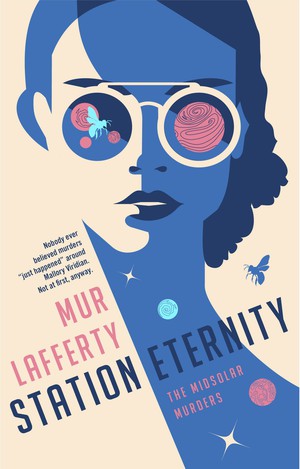
And while first contact had occurred, no restrictions on sightseers and vacationers are in place, so aliens are visiting, without warning, and in random parts of our world. Which is how Xan (Alexander) Morgan, winds up abducted by a trio of rock like Gnies humanoids, who are on a quick trip to Earth. The one drunk on lava has decided to pick him up as a pet, or something. Since he’s in the army, he’s AWOL, a murder witness, possible suspect, and an alien abductee. No probing is done, but a translating bug is inserted in his ear, so he can understand the aliens around him. Their trip to Earth is a quick one, to Earth and right back to Eternity Station, no side trips. All of which is a subject of conversation among the three Gneis.
So, three humans on the station, two officially, several aliens of different types, most with intelligent symbionts of some kind. The soon to arrive shuttle full of humans makes Mallory panic, because, of course, murder victims and murderers are the probable result of them coming here. Xan doesn’t really see the harm (doesn’t believe her.) And Adrian attempts to capture Mallory, to give to whoever is coming on the shuttle. In addition, possibly he already knows his replacement is on it.
In the meantime, the aliens grumble about the strange, wet, humans, and distrust them for their lack of symbionts. Start Trek, this isn’t. But it is a fun, different world, and well built. The three Gneiss from the abduction of Xan are friends, but one of them is being kept on the station against her will by her grandfather, who has become a shuttle. (Yes, a Gneis rock person became a functioning space going vessel.) She’s come up with a plan to move on to be mobile herself, but it will upset the entire population of her people on the station.
Then the station’s symbiont is murdered, just as the shuttle from Earth arrives, and is attacked, leaving only 11 survivors. It spirals quickly out of hand from there. It’s an entertaining read, difficult to explain past “cozy mystery and science fiction blend”, but even more interesting for being complex.
Next in the series, Terminal Chaos is out, just as wild a ride as the first title.
Station Eternity, Midsolar Murders Series, by Mur Lafferty, 2022, Ace, an imprint of Penguin, Trade Paperback, 453 pages, $17 ISBN 978-0-593-09811-0
Friday Reads: Beyond the Wand by Tom Felton
Malfoy. The name alone sparks hatred among the Harry Potter community. Unless you’re a Slytherin. Then I guess it strikes hero worship. Maybe envy? In the Harry Potter movies, Tom Felton embodied this boy-bully wizard character with his whole shriveled up heart and blackened soul. The smallest, well-timed facial expressions almost made me feel sorry for a darkened boy wizard, shaped by a domineering father. Tom Felton never appeared on screen. Only Malfoy.
Then Tom Felton wrote a memoir. I almost didn’t read Beyond the Wand: The Magic and Mayhem of Growing Up a Wizard because I love to hate Malfoy so much. I didn’t want to watch the movies and know the mix of pain and triumph behind the scenes. I didn’t want to be yanked out of my carefully crafted fantasy land by looking at the man behind the wizard. But I decided to stir that cauldron anyway.
Now I wonder if Felton would have made the same life choices if he had known he would likely hear wizard puns until he was old and gray. Probably. There are worse ways to go down in history. He has plenty of wizard puns himself. I had seen him on the Graham Norton Show and other chat shows with the stars, but his memoir made him more real than any TV show. In my mind he was still a teenager, but he’s actually 36, a year older than me. I know actors age beyond their movies, but I never realized he was so close to my own age all these years.
The collision of fantasy and reality felt unnatural. There’s a reason I never want to meet the actor. They’re never like the characters you know and love. Or hate. It took about four or five chapters for me to see Tom instead of Malfoy. I know I’m not the only one with this problem because Tom still gets death glares from Gryffindors on a regular basis. Even when he tried to go back to his regular school life in between filming movies. The Muggle is real. Ahem. Struggle.
When he’s just Tom, it’s fascinating to learn how he sees the wonderful world of Harry Potter as a tool to bring people together. He believes in unity and shared purpose, just like his co-star Emma Watson. Off screen, he is a whole person who struggles with depression and figuring out who he is and what’s next in life. Regardless of common human struggles, Tom’s overall outlook on life and the world is something everyone should aspire towards.
Long story short, I’m glad I lifted the curtain and saw the man behind the wizard. Incredible things can happen when you decide to stir the cauldron.
Felton, Tom. Beyond the Wand: The Magic and Mayhem of Growing up a Wizard. Grand Central Publishing, 2022.
Friday Reads & BookFace Friday: “Making It So” by Patrick Stewart
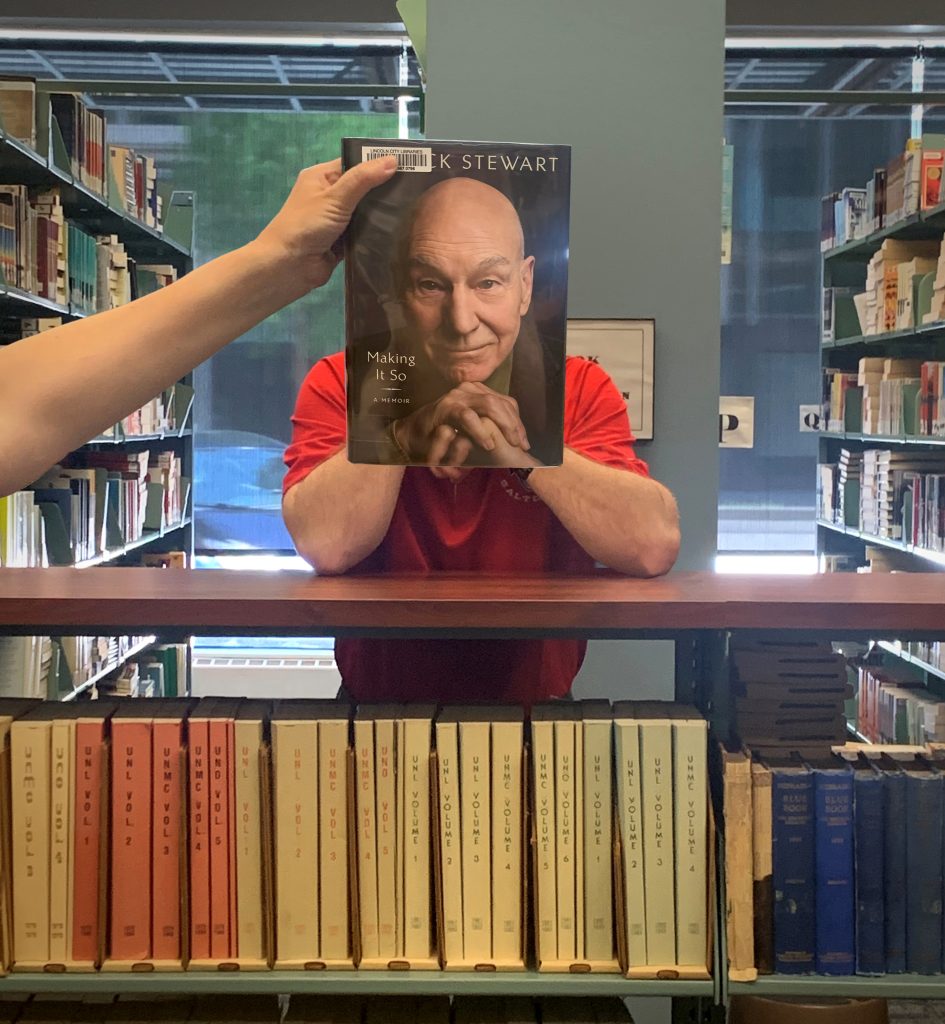
I remember watching and enjoying Star Trek: The Next Generation, starring Patrick Stewart as Jean-Luc Picard, but I wouldn’t call myself a diehard Trekkie. That was no barrier to finding Making It So, Stewart’s recently released memoir, enchanting and delightful. Especially the Audie award-winning audio edition, narrated by Stewart, himself.
As you can imagine, he declaims every word of every sentence with gusto!Stewart (b. 1940) starts at the beginning, describing what it was like growing up working class in Yorkshire in the 1940s and early 1950s. This includes a brief etymology lesson on the Yorkshire dialect he grew up speaking, which, according to Stewart, would have been “nearly incomprehensible to Londoners, let alone Americans.” For instance, he explains that “ata,” which meant “are you,” descended from “art though”; “nowt” meant “nothing”; “Geroff!” meant “leave me alone”; and a chamber pot was a “gazunder,” because it “goes under” the bed. This is relevant since in order to become an actor he had to learn “received pronunciation,” or “RP.” (RP was the standard pronunciation used by BBC broadcasters back in the day.)
Stewart also does a good job conveying the degree to which theater permeated English society at the time. It ranged from amateur dramatics (“am-drams”) at the local level, to a network of regional repertory theaters, all the way up to the Royal Shakespeare Company in Stratford-upon-Avon and the National Theatre in London. And thanks to financial support by the government in the form of grants and scholarships, it was accessible to all—even a working-class boy like Stewart, who got his start locally and then worked his way to the top.
If you are particularly interested in the Star Trek: Next Generation portion of this memoir, you’ll have to be patient, or skip to chapter 16. From there on out (there are a total of 25 chapters in the book), you will be rewarded with lots of insider, behind-the-scenes information about Stewart’s time as Picard. There are also plenty of details about his stint as Charles Xavier in the X-Men movie franchise, and voice work for Seth MacFarlane’s Family Guy and American Dad, as well as other television, film, theater, and social media projects he’s participated in, including reciting all Shakespeare’s sonnets on Instagram during the pandemic lockdown.
While this memoir will appeal to Trekkies, theater nerds, and Anglofiles, there are also elements that will resonate with anyone who has lived a long life filled with both gratitude and regret. In later chapters, Stewart expresses remorse over the demise of his 23-year marriage to his first wife, and the damage that did to his relationship with their children, Daniel and Sophie: “[T]he hurt caused by my split with their mother has never fully gone away,” he writes. After a second brief marriage falls apart, he laments: “And so, another divorce. I felt stupid and responsible.” But he also joyfully expounds on life with his third wife, Sunny Ozell, to whom he’s been married since 2013, as well as his well-publicized friendship with Ian McKellen. Overall, Stewart comes across as a vibrant, engaged octogenarian who, despite living a full, rich life, is still ready for more!
Stewart, Patrick. Making It So: A Memoir. Gallery Books, 2023.
You can find “Making It So: A Memoir” by Patrick Stewart as an eBook in Nebraska OverDrive Libraries! Libraries participating in the Nebraska OverDrive Libraries Group currently have access to a shared and growing collection of digital downloadable audiobooks and eBooks. 194 libraries across the state share the Nebraska OverDrive collection of 26,174 audiobooks, 36,611 ebooks, and 5,210 magazines. As an added bonus it includes 130 podcasts that are always available with simultaneous use (SU), as well as SU ebooks and audiobook titles that publishers have made available for a limited time. If you’re a part of it, let your users know about this great title, and if you’re not a member yet, find more information about participating in Nebraska Overdrive Libraries!
Love this #BookFace & Friday Reads? We suggest checking out all the titles available in our Book Club collection, permanent collection, and Nebraska OverDrive Libraries. Check out our past #BookFaceFriday photos on the Nebraska Library Commission’s Facebook page!
Posted in Books & Reading, General
Tagged Book Covers, bookface, bookfacefriday, Ebook, Friday Reads, Making It So, Memoir, Nebraska OverDrive Libraries, Patrick Stewart, Reading
Leave a comment
Friday Reads: Atlantis, by David Gibbins
I am a huge fan of adventure novels and movies, so over the years I have really enjoyed the various books of Clive Cussler, Steve Berry, Dan Brown, David Baldacci, and Lee Child. An action/adventure author that I hadn’t read, David Gibbins, popped up on my radar recently, so I decided to try his first novel in the Jack Howard series, Atlantis, and it did not disappoint! Atlantis was written in 2005, and there are now 11 books in the series , so I’m really looking forward to reading the next one!
Archaeologist Jack Howard is a brave but cautious man. When he embarked on a new search for buried treasure in the Mediterranean, he knew it was a long shot. When he uncovered a golden disc that spoke of a lost civilization more advanced than any in the ancient world, he started to get excited. But when Jack Howard and his intrepid crew finally got close to uncovering the secrets the sea had held for thousands of years, nothing could have prepared them for what they would find in the murky depths – not only a shocking truth about a lost world but an explosive secret that could have devastating consequences today. Jack is determined to stop the legacy of Atlantis from falling into the wrong hands, whatever the cost. But first he must do battle to prevent a global catastrophe! **Synopsis courtesy of Fantastic Fiction**
Friday Reads: The Thursday Murder Club by Richard Osman
“After a certain age, you can pretty much do whatever takes your fancy. No one tells you off, except for your doctors and your children.”
Cooper’s Chase is a lovely upscale retirement village in Kent. Elizabeth (spy), Joyce (nurse), Ibrahim (psychiatrist), and Ron (union boss) meet every Thursday to discuss cold/unsolved murders – taken from their friend Penny’s old case files.
Told through Joyce’s journal entries, the club finds renewed purpose as two “new” murders basically fall on their doorstep. These septuagenarian detectives must use their past experiences and connection to (unofficially) help PC Donna discover the truth – this is her first murder investigation after all. Who is the killer and how are these murders connected to Cooper’s Chase?
A cozy mystery – the story focuses on our quirky cast of characters, their relationships and life lessons without being too gory or violent with the murders. The writing is warm-hearted and humorous with plenty of suspense, twists, and gossip.
Series:
- The Thursday Murder Club #1
- The Man Who Died Twice #2
- The Bullet That Missed #3
- The Last Devil to Die #4
Osman, R. The Thursday Murder Club. Penguin. 2020.
Friday Reads: The Last Man, by Mary Shelley, with a new foreword by Rebecca Solnit
When I read that Rebecca Solnit wrote a new foreword for a Mary Shelley book, and it was one I hadn’t read yet, The Last Man, I jumped to acquire the new Penguin edition. Solnit writes so eloquently on many topics close to my heart, and Shelley’s Frankenstein is one of my favorite books—I reviewed it for this blog some time ago, here.
We knew Mary Shelley invented the Frankenstein genre, of course, and is often credited (correctly, I would say) with writing the first science fiction novel when she did. It turns out that a few years later, she also wrote the first Western novel about human extinction, as well as the first book in the genre now known as “climate fiction.” When Shelley wrote this book, The Last Man, the skies over Europe were dark because of a volcanic eruption, a cholera epidemic was cutting swaths out of the human population, and England’s political parties were battling over the future identity of the country. The author was also dealing with terrible personal loss, including the recent death of her husband, the poet Percy Bysshe Shelley, and their special friend, the poet Lord Byron.
This dystopian novel, set in the late twenty-first century, was not well-received by critics or the general public when it was published in 1824, but modern readers find much to explore and enjoy here. (Perhaps the book was “ahead of its time” in more ways than one.) Shelley invented lore about “finding” secret writings in a cave in Naples that she fashioned into this text, with a story that runs from 2073-2100. The foreword to the 2024 edition, by Rebecca Solnit, expertly connects Shelley’s concerns with ours, two hundred years later.
If you’d like to read or listen to an earlier edition of this novel right this minute, you’re in luck, because it’s 200 years old so it’s definitely in the public domain! The Internet Archive has many options to read the work (here is one option for volume 1 of 3) and Librivox has free audio (here is one option). I appreciate how many wonderful texts and works are available through the Internet Archive—if you haven’t explored there, this is a great time to start.
And if you’re in Nebraska, we have a couple of editions (from 1993 and 2006), from University of Nebraska Press, in our circulating collection to check out. You can search our OPAC here to request a copy.
Shelley, M. W., Solnit, R., & Havard, J. O. (2024). The last man. Penguin Classics.
Friday Reads: The Perfect Passion Company by Alexander McCall Smith
This book may be the first in another new series and released in time for Valentine’s Day since it features a matchmaking business. Katie Donald agrees to leave her job at a London gallery to run the Perfect Passion Company in Edinburgh while the proprietor, Katie’s Aunt Ness, takes an adult gap year in Ontario, Canada. Katie has no formal training in this business and receives only brief but basic instructions. Ness introduces Katie to William, the handsome Australian knitwear designer who lives in a flat adjacent to the agency office. William, along with the accountant, will be all the support Katie receives as she begins interviewing and introducing hopeful, love-seeking clients who would rather not use dating apps.
Her first client is a retired airline pilot turned farmer, who is looking for someone to cook for him. Her second client has struggled with relationships due to an overbearing mother. A third client is a verbose woman whose list of requirements for a man is lengthy and unattainable. Katie sends the first client to cooking school, the second client receives an introduction to a very strong-willed and assertive woman, and the third client is introduced to a man who wears adjustable hearing aids. Mostly successful and humorous results all around.
What makes Smith such a reliable author for me are his charming characters in delightful settings with clever dialog. This book is set in Edinburgh in the New Town area, the same neighborhood used for the 44 Scotland Street Series. In this book Katie is a level-headed, self-confident woman who is an excellent problem solver. Often, Katie is able to hold back words in a conversation she would like to say, but realizes in the moment, perhaps another comment would be more acceptable. Her interior thoughts are funny and relatable, unfortunately, her own success in love is lacking. William possess common sense, artistic talent, and tact although he has a few blind spots when it comes to his own love life. Smith rounds out the cast with hyperbolic and amusing characters. Having been to Edinburgh, I am familiar with the setting and am always happy to visit again.
Finding nonfiction to read is never difficult, but more recently, fiction has been a challenge. Alexander McCall Smith will always be a go to author for me.
Smith, Alexander McCall. The Perfect Passion Company. Vintage. 2024
Friday Reads: Will Trent Novels
I don’t know about you, but I am a sucker for a good book series. I blame my favorite childhood series, because once I find a character I like I just want their story to continue. Lately I’ve been deep into mystery and detective novels, including Karin Slaughter’s Will Trent series, Triptych, Fractured, Undone, and Broken. I’m currently on the fourth book in this twelve book series, and have enjoyed the world and characters that Karin Slaughter has created with character crossovers from her other book series including The Grant County Series.
Set mainly in Atlanta, Karin Slaughter’s Will Trent series begins with Triptych, where you meet Georgia Bureau of Investigation (GBI) Special Agent Will Trent and a slew of other characters that will continue throughout the series. Including his hard as nails GBI boss, Amanda Wagner, various childhood acquaintances, and other law enforcement officers. Orphaned as an infant, Will Trent spent his entire childhood as a ward of the state, growing up in group homes and foster care. And for his entire adult life, Trent has been concealing that he is barely able literate. Due to his unconventional childhood, he’s been living with undiagnosed dyslexia, finding creative ways to work around this problem, and keep it a secret. In spite of all this, or perhaps because of it, he’s an observant, thoughtful, and dedicated detective, solving crimes and seeing what others do not.
Now a series on the Hulu streaming service, Will Trent and his dog Betty are out there for everyone, even those non-readers, and it is a great TV show.
Slaughter, Karin. Triptych. Delacorte Press. 2006
Posted in Books & Reading, General
Tagged books, Crime, Fiction, Friday Reads, Karin Slaughter, mystery, Novel, Reading, series, Will Trent Series
Leave a comment
Friday Reads: 2020: One City, Seven People, and the Year Everything Changed by Eric Klinenberg
If there were a year that many would like to forget, it would likely be 2020. The worldwide pandemic that brought the spread of a novel virus, originating in rural China, sparked global disruption and changes that will continue into the future. In his new book, 2020, sociologist Eric Klinenberg chronicles the experiences, stories, and research associated with the pandemic, public health measures, economic peril, political distress, and societal changes.
The COVID pandemic, George Floyd’s death and the social justice movement, and the presidential election were prominent in this historic year. Klinenberg observes, “This story is not over. We are living through the long 2020.” 2020 includes an extensive presentation of data and is global in scope. However, as broad and sweeping as it is with comparisons and contrasts, a unique feature is the personal stories that reflect on individuals and their experiences living through this extraordinary time. Experiences depend on individual circumstances. Location, lifestyle, and access to resources all played a significant role. A takeaway is how these disruptive events affected each individual in their own personal way.
Disturbing was the growing divide over policies and actions to address the pandemic. Policies and actions varied from neighborhood, community, state, national, and global. The United States lacked consistency in providing direction. States differed in the extent of public health safety policies – some highly restrictive and others much less so. Communities varied based on local leadership and circumstances. Overall, the pandemic strained public trust in both government and science, leading to deep divisions over measures like mask mandates, social distancing, lockdowns, and vaccinations.
Klinenberg profiles seven New Yorkers including a new bar owner, an elementary school principal living in a multigenerational home, a transit worker, a local political aide, a retired district attorney turned neighborhood organizer, and others. Notable is the Staten Island bar owner who declared his bar an autonomous zone and refused to follow New York City’s health safety requirements. Questionable as his actions were, we can sympathize with his dilemma – opening a new business and having it shut down soon after. Others interviewed spoke of depression, food insecurity, and employment uncertainty. For others – the vulnerable – those living in high-density neighborhoods, nursing homes, those lacking homes with the resources school age children needed to participate in online education.
Despite the negative, there are remarkable examples of compassion and courage, as well as the day-to-day efforts of many to provide care for family, friends, neighbors – donations, pantries, deliveries, childcare, and more. To be appreciated are the health care workers, teachers, and all in “essential” occupations with close exposure to illness.
Klinenberg’s book is difficult to read because it is a reminder of the tragedy of pervasive illness, death, disruption, and economic uncertainty. Consequences have lingered and polarization continues. A troubling question remains whether we are now better prepared and less vulnerable for the next pandemic.
Eric Klinenberg is Professor in the Social Sciences and Director of the Institute for Public Knowledge at New York University. Among his other books is Palaces for the People, published in 2018. In regard to Palaces for the People, Carla Hayden, Librarian of Congress, commented that “Klinenberg is echoing what librarians and library patrons have been saying for years: that libraries are equalizers and absolutely universal.”
Klinenberg, Eric. 2020: One City, Seven People, and the Year Everything Changed. Knopf. 2024.
Friday Reads: Dark, Salt, Clear by Lamorna Ash
My favorite book discoveries are often found nestled amongst travel guides. While guidebooks often shrink small towns into succinct paragraphs, and weigh their significance based on subjective criteria suited for outsiders, I love a book that digs deeper into a place. Dark, Salt, Clear: The Life of a Fishing Town is one of these finds.
Lamorna Ash is a twenty-something Londoner, who ventures to the Cornish coastline to learn about fishing. Although she is an outsider, she has roots in Cornwall. Her mother was raised there and named her daughter for a Cornish village. Lamorna settles in Newlyn, a town centered on the fishing industry, steeped in tradition, but also rapidly changing. The locals quickly welcome her into their lives and workplaces, allowing her access to the various enterprises, including participating in the catch, processing fish, and observing the wholesale auction in an ever changing global market.
Dark, Salt, Clear is not just a story about fishing. It’s about the people, the place, and the complex beauty of it all. Ash peppers her story with poetry and prose from others who experienced the sea and its coastlines. The book’s title comes from the poem “At the Fishhouses” (1947) by Elizabeth Bishop:
“It is like what we imagine knowledge to be:
dark, salt, clear, moving, utterly free,
drawn from the cold hard mouth
of the world, derived from the rocky breasts
forever, flowing and drawn, and since
our knowledge is historical, flowing, and flown.”
Ash is also adept at interweaving her own poetic observations about life and the natural world, and often reflects on the things she learns from the people she meets including captains, deckhands, birdwatchers, fishmongers, processors, barkeeps, and geologists.
“A geologist’s task is to see beyond the ways in which time tries to smooth out difference, examining layers in order to isolate each sift to our world, to feel every fault line. We discuss how hard this is to do this with people, to imagine our lives not as one continuous line, but comprised of hundreds of versions, stacked up behind us, and hundreds more ahead of us too, like those pairs of facing mirrors that make your reflection curl up infinitely on either side of you.”
The book not only explores what it means to work in the fishing industry, but also what it means to live in a place that is so connected to the sea. As a person who grew up in a small coastal town in the Pacific Northwest, I was intrigued to learn about another coastal town across the globe. Books, like travel, can broaden our horizons, but also connect us. People in Cornwall look for the illusive “Green Flash” just like the residents of my hometown. The fishing industry everywhere is effected by globalization and climate change. Small seaside towns struggle with similar issues like tensions between tourism and industry. Fishing families across the globe are impacted by metal health issues, tragedy, and grief.
If you are curious about the natural world and the human experience in a small town across the Atlantic, check out Dark, Salt, Clear. While I picked up a physical copy of this book from my local library, you can also read it as an ebook through the Nebraska OverDrive Libraries.
Ash, Lamorna. Dark, Salt, Clear: the Life of a Fishing Town. Bloomsbury, 2020.
Friday Reads: Elvis in Vegas: How the King Reinvented the Las Vegas Show
I miss the Las Vegas of old. The endless submersion in Kitch (perhaps only bested by the highly recommended House on the Rock), cheap eats and drinks, low stakes table games, cigarillo smoke, and copious amounts of prime opportunities for people watching. Much of this existed historically, or at least to a greater extent by comparison, Downtown. I remember the draw to Downtown, before the gaudy “Fremont Street Experience” was installed in 1995. Less walking for sure, not to mention a much better value. A place where you could traverse across 4 or 5 casinos in a matter of just a few minutes. Where you could play 25 cent craps at the Golden Gate or $1 tables at the Four Queens, California, Las Vegas Club, Union Plaza, or the Horseshoe. If you were highbrow, you went to the $5 tables at the Golden Nugget. The dice go cold? Pick up your cocktail and head next door. You had options. For hungry gamblers, a trip over to the El Cortez or Lady Luck always offered excellent value, just off the main drag, but it was always advisable on the walk back (especially at night), to never, under no circumstances ever, stop. Always keep moving. These days, unfortunately, on the main drag downtown, you have hustlers in outlandish costumes (or virtually no costume at all) hassling you every ten seconds under that Fremont Street canopy that reeks of Commercialism.
Out on the strip, you used to have classics such as the Aladdin, Dunes, Riviera, Sands, Sahara, and while the Tropicana is still there (technically), the Moai are unfortunately long gone. The Moai most likely were too large to move at 35 feet tall, made outta solid concrete, and weighing 300,000 pounds each (they should’ve just left them there). While the Aku Aku restaurant in Las Vegas closed before my time, I did visit the Stardust on numerous occasions before it was imploded in 2007. Nothing would beat a cocktail stop at Slots-A-Fun when strolling the strip on hot summer days. Always ice cold and always just 75 cents, purchased from the guy standing across from the open door, insulated by the blaring casino air conditioning. Now we have the godawful Margarita by the Yard, at the low low price of (roughly) $35. The quantity may be there, but the value and quality sure ain’t. The authorities did keep one Aku Aku Moai, from the restaurant at the Stardust, (smaller than the ones at the Tropicana) moving it to Sunset Park, so there is that I suppose. Some of the local old timers may remember the Aku Aku lounge in Lincoln, inside the Villager Motel on O Street. Swank at a level only matched by its obvious equal, The Brothers Johnson. Unfortunately, like almost every other good thing around, the establishment tore down the Villager. The Tropicana will soon be demolished to make way for a baseball stadium, as many other icons have likewise succumbed to destruction. Anti-depressants were undoubtedly popped by any rational person after the announcement that the Mirage was sold and its iconic volcano will (eventually) be torn out to make way for a guitar shaped hotel (the property is now operated by Hard Rock International). What is the matter with these people? We should be discussing restoration of these gems to what they once were, instead of demolishing them in favor of something “new” that lacks any ounce of character. While I’m on the subject, I’d add that in almost all cases, demo and rebuild is more expensive than renovate and restore. However, the architects, designers, and consultants (and the politicians being greased by them) don’t make as much money taking that train, which is why the conductors ain’t selling it.
This book is more than merely the story of the revival of Elvis Presley’s career by virtue of his 636 sold-out shows at the International Hotel in Las Vegas. It tells a much broader story of the other performers and the history of those performances in the city. The set-up leading to the resurgence of Elvis is a worthwhile read. Yes, there is much focus on the Rat Pack and other Vegas essentials such as Tom Jones, Wayne Newton, Liberace, and Don Rickles (just to name a few), as well as the numerous all night long lounge acts. Takeaways: Most were great performers, but Frank Sinatra was a tyrant of legendary magnitude, directing his outbursts to almost all, but especially Sammy. The writing in this book is filled with all sorts of nuggets. As evidence, describing the comeback of Elvis, and the success of his first show, Zoglin summarizes:
“The show lasted an hour and fifteen minutes, and Elvis worked himself to a frazzle: pacing the stage like a panther, crouching, lunging, leaping, doing karate kicks and punches. He was audibly huffing and puffing after just a few minutes. He gulped water and Gatorade and mopped his sweat with towels handed to him by Charlie Hodge, or handkerchiefs and napkins tossed onstage by women in the audience.”
And, the downfall:
“His performances first began to be affected, by most accounts, during his August 1971 engagement. Elvis looked puffy and seemed listless onstage. His sets were rarely longer than forty-five minutes, and filled with so many fits and starts and distracting karate displays that some audience members actually walked out.”
Overall, Zoglin’s book is a formidable history of entertainment in the city of Las Vegas. Don’t be fooled by the title, it only partially describes the comeback (and downfall) of Elvis. In reality, it’s a much broader history of showbiz in Las Vegas, and the longing for those good ol’ days.
Zoglin, Richard. Elvis in Vegas. Simon & Shuster, 2019.
Friday Reads: Tasting History by Max Miller
In February 2020, Max Miller posted his first Tasting History video to YouTube. A week later COVID-19 hit, and he was furloughed from his job. As the world entered the beginning of the pandemic lockdown, people went online, looking for entertainment, distraction, and connections. Tasting History was there. And the rest is, well, history.
Now, his viral video series has become a cookbook, Tasting History, Explore the Past through 4,000 Years of Recipes. Full disclosure: I haven’t cooked anything from this cookbook yet, I’ve just been enjoying reading through it so far.
We have been watching the Tasting History videos almost from the beginning, so when Max announced there would be a cookbook coming out, I knew we had to have it. And I was not disappointed.
The videos are a combination of recipe demo and history lesson, and that format has been carried over into the cookbook.
The book is arranged by geographic area: The Ancient World, The British Isles, Continental Europe, The Near & Far East, and The New World. Within each section the recipes are from oldest to newest. The oldest being Stew of Lamb, from Babylon, c. 1740 BC. The most recent recipes are both from 1914: Simnel Cake from England and Pecan Pie from Texas. Each recipe includes a few paragraphs about the history of the dish and the area of the world it originates from.
Since many old recipes do not provide precise measurements, or ingredients that we may recognize or have access to today, Max has re-created them as best as he can, based on his own cooking and historical knowledge. If you watch his videos, he does taste each dish, and he doesn’t always like them. But, that’s part of the fun and experimentation.
I think Tasting History, both the cookbook and the video series, is perfect for foodies, history buffs, or foodie history buffs. Max is still making videos, and I look forward to watching the new ones every week. A fun tip: he is a big Pokemon fan, and there is always a figure or plush in the background of each video that relates to the dish he is making. See if you can find them all!
